
The U.S. population grew at the slowest pace in its history in 2021, according to the Census Bureau. Estimates released late December 2021 show that the population grew by only 0.1%, in large part due to the COVID-19 pandemic.
The population can grow by two means — migration and natural change. Figures released late March show that half of all states — and nearly three-quarters of all counties — experienced more deaths than births between July 1, 2020, and June 30, 2021, meaning a natural decrease.
The Census notes that the likely cause is the COVID-19 pandemic. The greatest number of states that experienced a natural decrease in the previous decade was eight, in the 2019-2020 period, which already included a few months of the pandemic. Previously four or less states experienced a natural decrease in a single year.
As for other longer-term trends, births in most states had been declining since 2016. Between 2020 and 2021, however, all states experienced a drop in births.
To identify the 25 states that experienced more deaths than births, 24/7 Wall St. reviewed U.S. Census Bureau data on state populations and the components leading to population changes from July 1, 2020 to July 1, 2021. All data came from the census.
The region with the most widespread natural decrease is the Northeast, with seven of nine Northeastern states experiencing more deaths than births in 2021. Meanwhile, in the West, only three out of 13 states experienced natural decrease.
Not all states with a natural decrease experienced overall population decline. The population declined in just eight of the 25 states that experienced more deaths than births, as they benefited from positive net migration. In fact, Delaware and Montana are listed among the top five states where population has grown the most since the pandemic.
And in Florida, the state with the largest decline due to natural change, the population increased by nearly 1%. While there were only 210,000 births compared to 255,0000 deaths, contributing to a 45,000 population decline due to natural changes, Florida’s population grew from 21.57 million to 21.78 million as the Sunshine State has been attracting new residents. (Florida is also projected to be among the top five states that will grow the most in the next 20 years.)
Click here to see the states that had more deaths than births in 2021

25. New Mexico
> Natural population decrease, 12 months through July 2021: -1,086 (births: 21,996, deaths: 23,082)
> Total population: July 1, 2020 2,117,566 — 15th lowest
> Total population: July 1, 2021 2,115,877 — 15th lowest
> Overall population growth: -0.08% — 15th lowest
[in-text-ad]
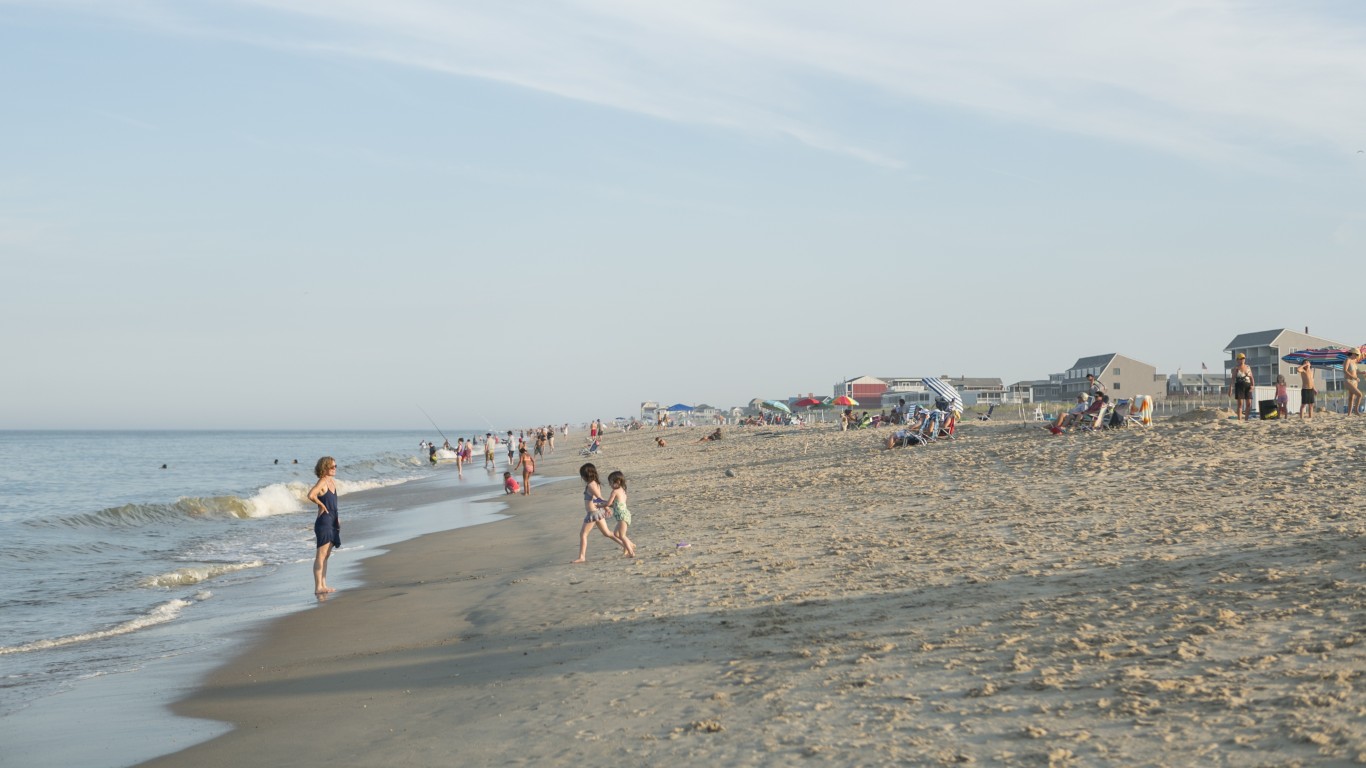
24. Delaware
> Natural population decrease, 12 months through July 2021: -1,344 (births: 10,311, deaths: 11,655)
> Total population: July 1, 2020 991,886 — 6th lowest
> Total population: July 1, 2021 1,003,384 — 6th lowest
> Overall population growth: 1.16% — 6th highest

23. Montana
> Natural population decrease, 12 months through July 2021: -1,520 (births: 10,502, deaths: 12,022)
> Total population: July 1, 2020 1,086,193 — 7th lowest
> Total population: July 1, 2021 1,104,271 — 8th lowest
> Overall population growth: 1.66% — 3rd highest

22. North Carolina
> Natural population decrease, 12 months through July 2021: -1,698 (births: 114,011, deaths: 115,709)
> Total population: July 1, 2020 10,457,177 — 9th highest
> Total population: July 1, 2021 10,551,162 — 9th highest
> Overall population growth: 0.90% — 11th highest
[in-text-ad-2]

21. Vermont
> Natural population decrease, 12 months through July 2021: -1,827 (births: 5,057, deaths: 6,884)
> Total population: July 1, 2020 642,495 — the lowest
> Total population: July 1, 2021 645,570 — the lowest
> Overall population growth: 0.48% — 18th highest

20. Oklahoma
> Natural population decrease, 12 months through July 2021: -1,870 (births: 47,125, deaths: 48,995)
> Total population: July 1, 2020 3,962,031 — 23rd lowest
> Total population: July 1, 2021 3,986,639 — 23rd lowest
> Overall population growth: 0.62% — 16th highest
[in-text-ad]
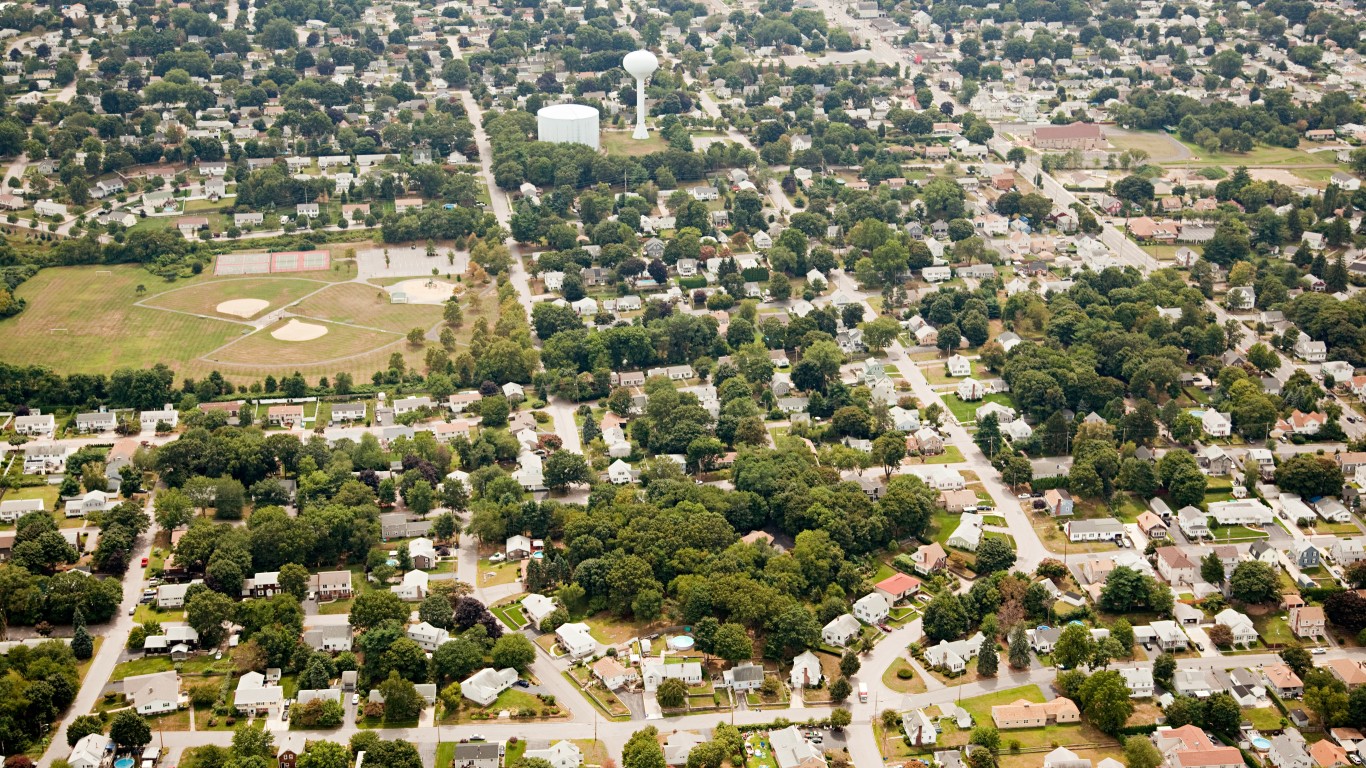
19. Rhode Island
> Natural population decrease, 12 months through July 2021: -2,250 (births: 9,717, deaths: 11,967)
> Total population: July 1, 2020 1,096,229 — 8th lowest
> Total population: July 1, 2021 1,095,610 — 7th lowest
> Overall population growth: -0.06% — 16th lowest
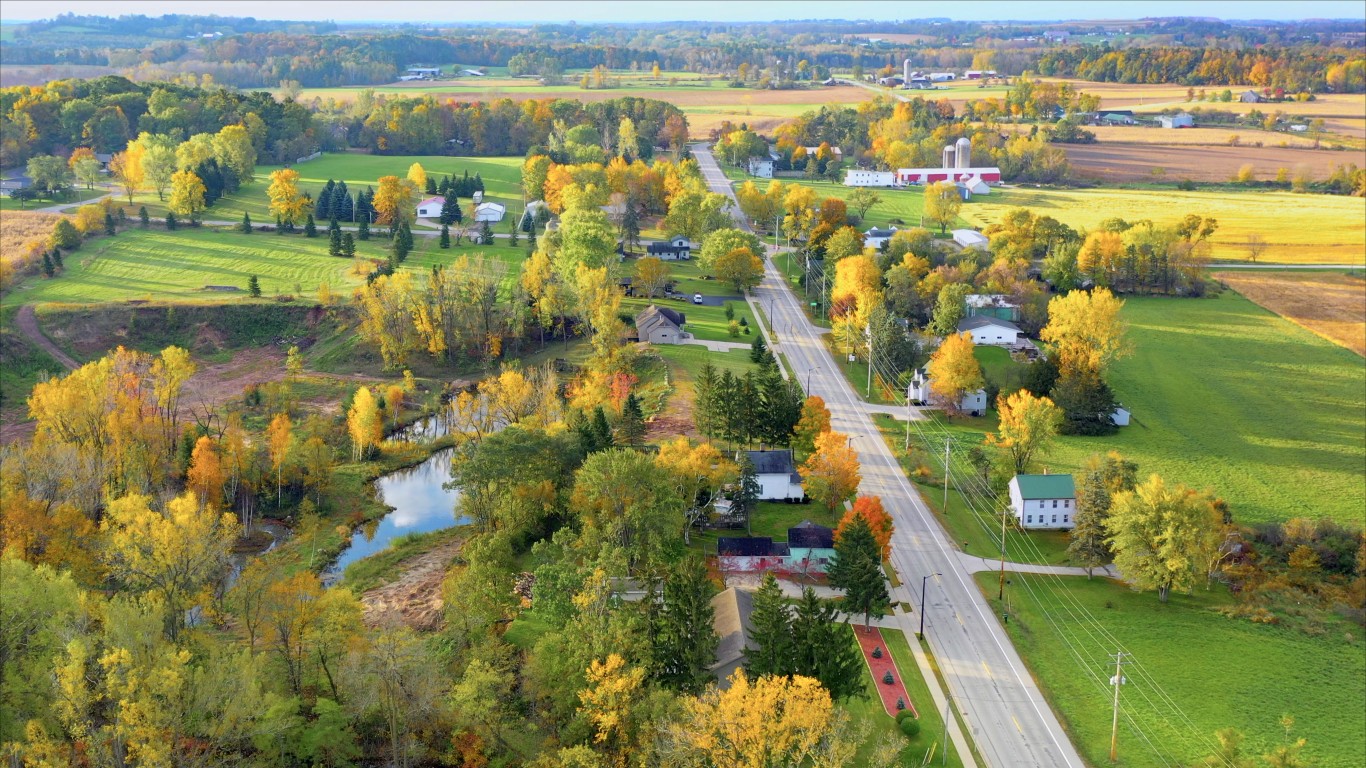
18. Wisconsin
> Natural population decrease, 12 months through July 2021: -2,581 (births: 60,404, deaths: 62,985)
> Total population: July 1, 2020 5,892,323 — 20th highest
> Total population: July 1, 2021 5,895,908 — 20th highest
> Overall population growth: 0.06% — 20th lowest

17. Arkansas
> Natural population decrease, 12 months through July 2021: -3,236 (births: 35,021, deaths: 38,257)
> Total population: July 1, 2020 3,012,232 — 18th lowest
> Total population: July 1, 2021 3,025,891 — 18th lowest
> Overall population growth: 0.45% — 19th highest
[in-text-ad-2]

16. Mississippi
> Natural population decrease, 12 months through July 2021: -3,237 (births: 34,957, deaths: 38,194)
> Total population: July 1, 2020 2,956,870 — 17th lowest
> Total population: July 1, 2021 2,949,965 — 17th lowest
> Overall population growth: -0.23% — 9th lowest

15. New Hampshire
> Natural population decrease, 12 months through July 2021: -3,744 (births: 11,414, deaths: 15,158)
> Total population: July 1, 2020 1,377,848 — 10th lowest
> Total population: July 1, 2021 1,388,992 — 10th lowest
> Overall population growth: 0.81% — 12th highest
[in-text-ad]
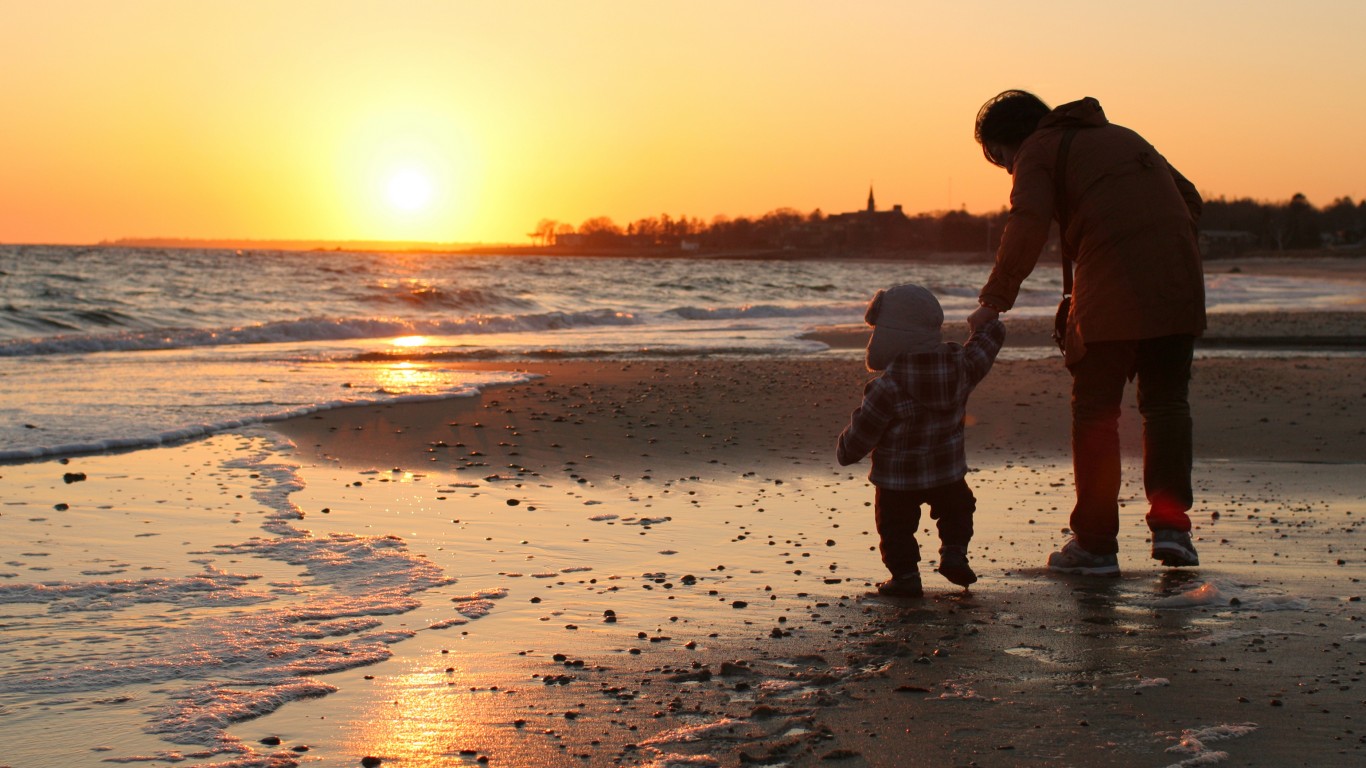
14. Massachusetts
> Natural population decrease, 12 months through July 2021: -4,234 (births: 66,197, deaths: 70,431)
> Total population: July 1, 2020 7,022,220 — 15th highest
> Total population: July 1, 2021 6,984,723 — 15th highest
> Overall population growth: -0.53% — 6th lowest

13. Missouri
> Natural population decrease, 12 months through July 2021: -4,515 (births: 68,818, deaths: 73,333)
> Total population: July 1, 2020 6,154,481 — 19th highest
> Total population: July 1, 2021 6,168,187 — 18th highest
> Overall population growth: 0.22% — 24th highest

12. Oregon
> Natural population decrease, 12 months through July 2021: -4,715 (births: 39,877, deaths: 44,592)
> Total population: July 1, 2020 4,241,544 — 24th lowest
> Total population: July 1, 2021 4,246,155 — 24th lowest
> Overall population growth: 0.11% — 21st lowest
[in-text-ad-2]

11. Connecticut
> Natural population decrease, 12 months through July 2021: -4,975 (births: 32,671, deaths: 37,646)
> Total population: July 1, 2020 3,600,260 — 22nd lowest
> Total population: July 1, 2021 3,605,597 — 22nd lowest
> Overall population growth: 0.15% — 25th highest

10. Kentucky
> Natural population decrease, 12 months through July 2021: -6,128 (births: 50,725, deaths: 56,853)
> Total population: July 1, 2020 4,503,958 — 25th lowest
> Total population: July 1, 2021 4,509,394 — 25th lowest
> Overall population growth: 0.12% — 24th lowest
[in-text-ad]

9. Maine
> Natural population decrease, 12 months through July 2021: -6,344 (births: 11,291, deaths: 17,635)
> Total population: July 1, 2020 1,362,280 — 9th lowest
> Total population: July 1, 2021 1,372,247 — 9th lowest
> Overall population growth: 0.73% — 14th highest

8. Tennessee
> Natural population decrease, 12 months through July 2021: -7,591 (births: 77,353, deaths: 84,944)
> Total population: July 1, 2020 6,920,119 — 16th highest
> Total population: July 1, 2021 6,975,218 — 16th highest
> Overall population growth: 0.80% — 13th highest

7. South Carolina
> Natural population decrease, 12 months through July 2021: -7,807 (births: 54,713, deaths: 62,520)
> Total population: July 1, 2020 5,130,729 — 23rd highest
> Total population: July 1, 2021 5,190,705 — 23rd highest
> Overall population growth: 1.17% — 5th highest
[in-text-ad-2]

6. Alabama
> Natural population decrease, 12 months through July 2021: -8,548 (births: 56,320, deaths: 64,868)
> Total population: July 1, 2020 5,024,803 — 24th highest
> Total population: July 1, 2021 5,039,877 — 24th highest
> Overall population growth: 0.30% — 20th highest

5. West Virginia
> Natural population decrease, 12 months through July 2021: -9,870 (births: 17,232, deaths: 27,102)
> Total population: July 1, 2020 1,789,798 — 12th lowest
> Total population: July 1, 2021 1,782,959 — 12th lowest
> Overall population growth: -0.38% — 8th lowest
[in-text-ad]

4. Michigan
> Natural population decrease, 12 months through July 2021: -14,353 (births: 102,983, deaths: 117,336)
> Total population: July 1, 2020 10,067,664 — 10th highest
> Total population: July 1, 2021 10,050,811 — 10th highest
> Overall population growth: -0.17% — 11th lowest

3. Ohio
> Natural population decrease, 12 months through July 2021: -15,811 (births: 128,595, deaths: 144,406)
> Total population: July 1, 2020 11,790,587 — 7th highest
> Total population: July 1, 2021 11,780,017 — 7th highest
> Overall population growth: -0.09% — 14th lowest

2. Pennsylvania
> Natural population decrease, 12 months through July 2021: -30,878 (births: 128,351, deaths: 159,229)
> Total population: July 1, 2020 12,989,625 — 5th highest
> Total population: July 1, 2021 12,964,056 — 5th highest
> Overall population growth: -0.20% — 10th lowest
[in-text-ad-2]
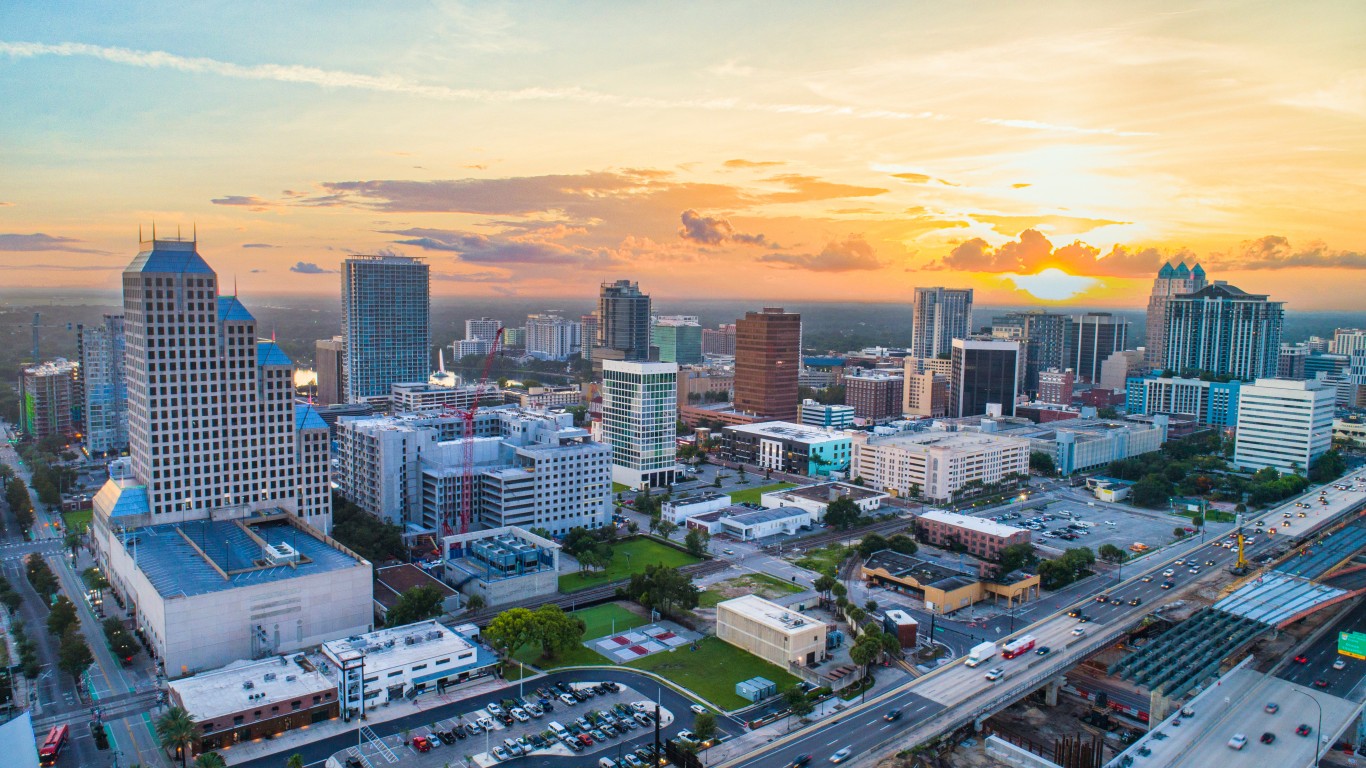
1. Florida
> Natural population decrease, 12 months through July 2021: -45,248 (births: 210,305, deaths: 255,553)
> Total population: July 1, 2020 21,569,932 — 3rd highest
> Total population: July 1, 2021 21,781,128 — 3rd highest
> Overall population growth: 0.98% — 8th highest
Thank you for reading! Have some feedback for us?
Contact the 24/7 Wall St. editorial team.
 24/7 Wall St.
24/7 Wall St. 24/7 Wall St.
24/7 Wall St. 24/7 Wall St.
24/7 Wall St.


